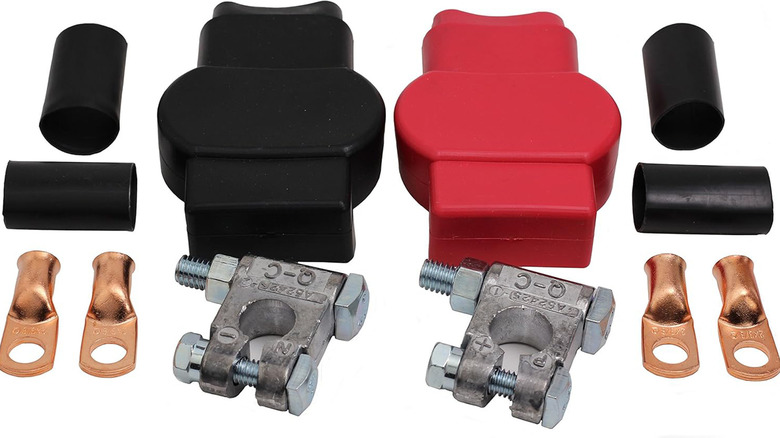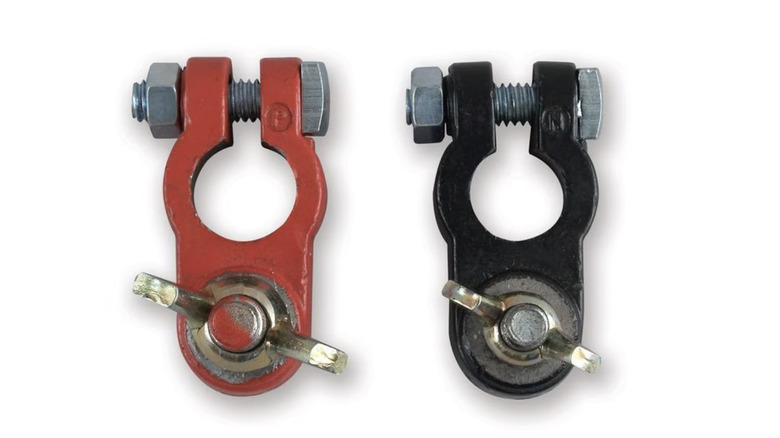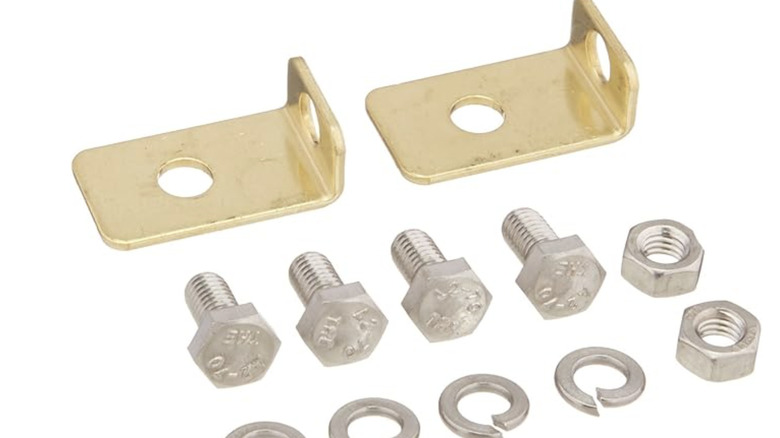What Are Military Style Battery Terminals & How Do They Compare To Other Types?
We may receive a commission on purchases made from links.
Cars are complex machines with thousands of parts that must work in harmony, but at the heart of it all lies your battery. If your dashboard battery light is on or your battery drains quickly, the problem might be with the terminals that connect your battery's electrodes to the thick cables that supply power to and return it from your car's systems. You might have corrosion interrupting the flow of current, or the terminals themselves may not be clamped down tightly enough. When it comes time to replace your battery terminals, you'll be presented with some choices. Many auto parts stores sell terminals labeled as "military terminals," but what are military terminals and how are they different from the other types of battery terminals?
Military battery terminals are constructed so you can connect additional wires to them along with the main cables (usually 4 gauge or thicker) that connect to your battery. These extra wires are connected via a long fastening bolt on the side of the terminal or extra fasteners on top of the terminal. Ring terminals are used to attach the battery wires and run power to accessories like auxiliary lights, winches, or stereo amplifiers. When using a military-style battery terminal, make sure to install the largest auxiliary ring terminal first. This ensures the remaining terminals will make good contact when the bolts and nuts are tightened.
There are several types of battery terminals
There are various types of battery terminals that differ in the way they attach to the posts and how the cables are fastened to the terminals. Military-style terminals use ring connectors to mount wiring to a horizontal bolt and are clamped to the battery posts via another bolt and nut. Marine-style battery terminals like the red and black ones shown above clamp on to the posts in the same way as military terminals, but additional connections are made via a post that sticks up from the terminal and are usually secured using a wing nut.
Compression-style terminals clamp to the post in a similar fashion but use a different method for connecting the cables. The cable is fed through a compression nut and into a threaded socket on the terminal. The nut is then tightened, and the ends of the sleeve on the nut clamp down on the wire. The nut makes electrical contact with the battery post through the socket portion of the terminal, and solder is sometimes added to keep the cable from fraying and ensure a solid connection.
Most battery terminals are made of a lead alloy, but some are predominantly brass or copper or contain zinc or steel.
L-style terminals are used on batteries with threaded posts
Some motorcycles and European cars use L-style terminals, which are angled pieces of metal with a hole drilled through the short (vertical) side. The long side is connected to the battery's anode or cathode, and a ring-style connector on the appropriate cable is bolted through the hole on the short side. Some batteries use flag terminals, which are vertical protrusions with threaded holes drilled in them. The battery cables are bolted to the terminals; this configuration reduces the internal pressure on the case and terminals that can be created when tension is placed on the cables. The cables can be bolted directly to the flag terminals, or you can use an L-type adapter like the ones shown above to mount the cables.
Some medium-and heavy-duty truck batteries use threaded stud posts, which accept cable connections by way of a ring terminal and nut or threaded sleeve. As with flag terminals, you can use L-type adapters to reroute the battery cables if you wish.
When disconnecting battery terminals, always start with the negative (ground) side, then disconnect the positive (hot) terminal. Reconnect the positive terminal first, then connect the negative terminal. Make sure both connections are tightened securely; even a little bit of a wiggle can cause your battery to discharge rapidly and leave you stranded. If you're unable to tighten clamp-style terminals completely, you can use shims to make the connection more secure.


